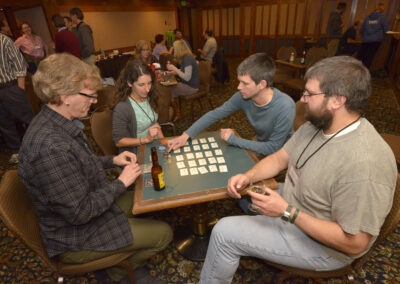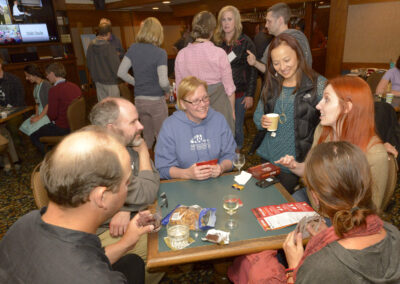This year, we’re celebrating our 25th anniversary, so our annual conference also afforded ample time for reflection on what it took to get where we are. Paul and Tom, two of the co-founders of the company, shared their memories of how Art+Logic got its name, and how that ampersand doesn’t just link together art and logic in a kind of Venn diagram, with just a bit of overlap, but rather it joins those two faculties of the mind and the imagination in a unified whole that draws on the strengths of each. It’s part of what makes the culture of Art+Logic so unique.
From the beginning, when the company made a point of hiring programmers with a background in music, A&L has insisted on being open to people from various backgrounds, welcoming gifted programmers that ranged from self-taught developers with degrees in music and myth and folklore to software engineers with extensive development experience. Internally, this approach culminates in fascinating and engrossing conversations during our annual conference. Throughout the year, however, this approach helps ensure that everyone at Art+Logic is a seasoned problem solver, capable of looking at a software dilemma from multiple angles while always remaining patiently aware that a colleague might offer an insight that could push the software even further, and thereby do even more to satisfy — and often exceed — the needs of our clients.
This year, we also had a chance to talk about what it means to say that we code the “impossible.” Many of us are engineers so, of course, there was some skepticism about claiming to do the impossible. But that’s also precisely why we put the impossible in scare quotes. To us, the impossible refers not to how we perceive a client’s dilemma, but to how a client might have had their project or idea described to them before coming to us. Over the 25 years that we’ve been developing software, our engineers have enjoyed the challenge of building unique solutions that not only overcome this idea of what’s possible, but we’ve done so through beautiful, elegant code that confirms the power of commingling art and logic.







